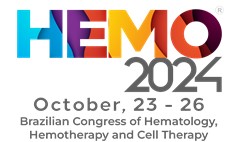
Ovarian Sertoli-Leydig Cell Tumors (SLCTs) are rare sex cord-stromal tumors, accounting for less than 0.5% of all primary ovarian tumors. They are most commonly diagnosed in adolescents and young women and can present with a variety of symptoms, including abdominal pain, a palpable mass, and, in some cases, signs of hormonal imbalance. While tumor markers such as Cancer Antigen-125 (CA-125) may be elevated, Neuron-Specific Enolase (NSE) is not typically associated with these tumors.
ResultsA 14-year-old girl presented with diffuse abdominal pain and sudden abdominal distension. Laboratory tests revealed elevated CA-125 (65.3 U/mL, normal: 0–35 U/mL) and NSE (13.7 µg/L, normal: 0–12.4 µg/L). Imaging studies, including transabdominal pelvic ultrasound and abdominal Computed Tomography (CT), demonstrated a large, 23 cm right ovarian mass with predominantly solid but focal cystic components, raising suspicion for malignancy. Given the tumor’s size and characteristics, a fertility-sparing right salpingo-oophorectomy and paravertebral retroperitoneal lymph node biopsies were performed. Histopathological examination confirmed an intermediate-grade Sertoli-Leydig cell tumor with frequent mitotic figures but no necrosis.
ConclusionThis case is notable as the first reported instance of an SLCT associated with elevated serum NSE levels. While NSE is primarily considered a marker for neuroendocrine tumors and small cell lung carcinoma, its elevation in this case raises questions about its potential role in SLCTs. This finding suggests a need for further research to determine whether NSE could serve as a useful biomarker in the diagnosis or monitoring of SLCTs. Given the rarity of these tumors and the limited data on their tumor marker profiles, additional studies are needed to explore the clinical significance of NSE elevation in SLCTs.






